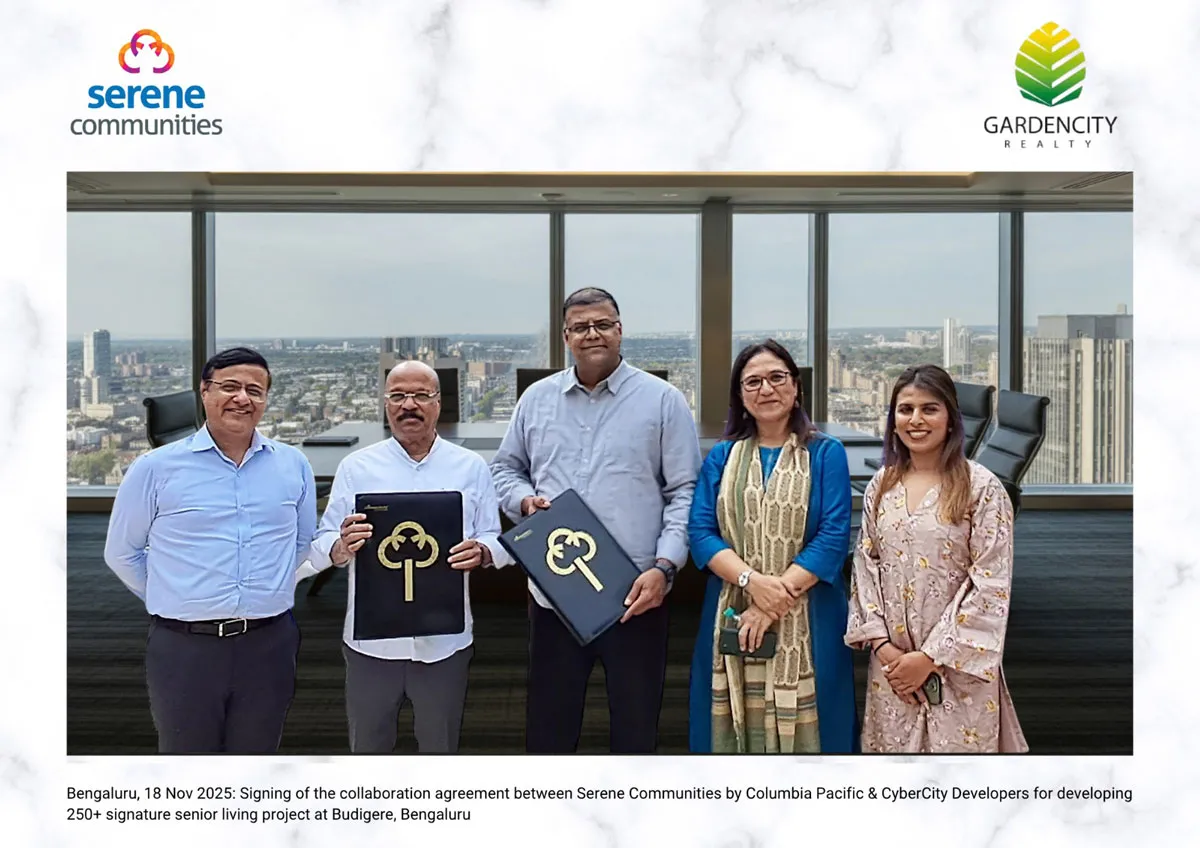Infrastructure growth of any nation directly impacts its socioeconomic development, and roads form the arteries of such a development. Over the past few years, the speed of road construction has become the benchmark for India's infrastructure creation. Emphasis is laid on development of infrastructure through construction of a sustainable road network in addition to timely maintenance, and rehabilitation activities.
“Innovation for the people and by the people is the direction of our New India.”
- Narendra Modi, Prime Minister, India
Advancing with technology
The recent penetration of science and technology in the road sector lends a colossal value to the development. Today, new and emerging technologies are reshaping the dynamics of road construction with a renewed focus on sustainable development which uses recycled materials, plastic wastes, self-healing asphalt, etc.
Additionally, the use of automation and machine-control technologies is expanding quickly, which forces OEMs to introduce cutting-edge and intelligent road construction technologies to enhance construction quality. Additionally, project monitoring, increased traffic efficiency, real-time vehicle tracking, and incident management are made possible by advanced technologies in highway development and management, such as project monitoring information systems, intelligent transportation, and traffic management systems.
On the latest advancements in technology, Ronald Bisio from Trimble claims that “Using digital data in machines and helping the use of machines in the construction of roadways provides incredible environmental gains, as there is less utilisation and better optimisation of the machines, lower costs are associated, and it generates more efficiency from the machines with a higher quality of work. NHAI has decided to mandate this technology as a pilot in Delhi-Mumbai Expressway on all machine types including a grater, compacter, and paver. If you adopt technology right from the initial stage, and at every stage of the construction workflow, then the power increases exponentially. What you have is a digital train of the physical world which helps complete operations and maintenance proactively. Proactive maintenance calls for the digital trend and a lot of analytics to be included which results in lowering the cost of maintenance.”
A resilient progress
The modern approach of highway alignment, which uses GIS and remote sensing technology, saves time, requires less labour, and is less expensive than the traditional method. In the past, road sector projects were carried out in constrained areas with a sparse use of technology.
Effective transportation planning and design can reduce the effects of storms that are climate-related. A comprehensive Detailed Project Report (DPR) is an essential component of the overall project planning and development process. A good DPR should be economical and include a workable proposal with less negative social and environmental impact. Climate resilience should be considered when developing the DPR. In turn, a climate-resilient road infrastructure will guarantee its economic, social, and environmental sustainability.
“The positive with regard to the road sector has been the National Infrastructure Pipeline with a ready plan. We have been trying to promote new technology to speed up the construction and to reduce the costs at the same time. The GoI, NHAI, and MoRTH have done a tremendous job to make it feasible for the contractors to select what kind of technology they want to use. The cost savings coming out from these technologies stays with the contractor, and this is a bold step taken by the government. New technology is already being used in India to speed up the construction and improve upon the quality. Today, we use contactless paving where the truck is directly landed into the paver without any physical touch. These machines are already been used for the Bharatmala project and have delivered excellent results as desired. Soil stabilisation and use of CTB is helping us to reduce the aggregates not only in national highways, but even in rural roads, asserts Ramesh Palagiri, MD & CEO, Writgen India.
As such, accuracy and completeness of surveys deserve special attention in project preparation. In any case, it should be ensured that experts having the required knowledge are deployed on the work. Use of new technology, modern instruments and survey techniques ensure high degree of accuracy and can speed up the work.
Deploying a structured network
Geographic information systems (GIS) are frequently used today in transportation-related applications. Highway maintenance, traffic modelling, accident analysis, route design, and environmental evaluation of road plans are examples of typical applications. A structured road network is a fundamental prerequisite for the majority of transportation GIS. It is important to consider other information about general topography, land use, and land cover when evaluating the effects of building. GIS are being used more and more in transportation planning organisations, particularly in urban transportation companies. Highway maintenance management is evolving into a crucial concern in many developed nations. Due to decreasing costs and rising user friendliness of GIS, many more authorities are now able to employ it for highway and transportation administration.
GIS provide a means for storing and evaluating data on population densities, land uses, traffic patterns, etc. for the transportation planners. Map/display and data integration are the main goals of using GIS. Agencies must identify possible problems that a GIS application can solve more quickly, affordably, and effectively than they can with current techniques. Recently, MoRTH started using GIS mapping to centrally administer the National Highways database. This will make it easier to monitor road developments and repair roads in a timely manner. The NH network has been mapped by BISAG-N using GIS, however field units must update and confirm this information.
Today, engineers, bridge owners, decision makers, and stakeholders use unmanned aerial vehicles (UAVs), also known as drones, to survey, inspect, and monitor road and bridge projects in order to investigate and document structural condition, evaluate safety performance, and deploy mitigation and rehabilitation strategies as needed. The most popular NDT for drone-based data collecting is visual imaging, which includes photo and video cameras. IRT, LiDAR, and sensors are then employed.
Fuelling equipment support
The market for construction equipment will follow an upward growth momentum in medium to long-term, despite rising input costs and inflation. The market is projected to grow at a rate of 6 per cent until the year 2026. The growth will be fuelled by increased demand and rising exports. However, India needs to keep a close eye on fresh COVID outbreaks in different parts of the region and the evolving economic and geopolitical situation across the world to protect its economy from further shocks.
“As the domestic economy gathers momentum and maintains a steady pace of growth, we expect mining activities to continue to grow. With the global energy crisis, most countries, India included, have fallen back on coal to meet their energy needs in the short term. This is also leading to an increase in mining activities, and we expect this trend to continue until the geo-political situation in the Europe remains tense. These, combined with improving road connectivity and network in the country will lead to an increase in the demand for mining trucks. We will continue to focus on customer value and develop products and solutions that meet their evolving requirements,” emphasises Sujeeth Pai, Director (Industrial Market), SKF India.
SKF is leveraging big data, artificial intelligence, and machine learning to revolutionize product development and increase efficiency. Components such as bearings, seals, and lubricants play a key role in improving equipment performance and drive profitable growth. The smart lubrication systems help automate the maintenance process, and reduce costs, while condition monitoring spots early signs of component damage to prevent downtime. The wide range of bearings reduce friction, repair meantime, and also helps businesses remain operational for longer durations.
The tapered roller bearings, hydraulic cylinder seals, spherical roller and plain bearings, and several other products and solutions from SKF are helping the construction equipment industry increase reliability and efficiency under harsh operating conditions. Mining operations face some of the toughest and most remote working conditions on earth. With heat, contaminants, vibration, heavy loads, and extreme production demands where lost days can be very costly, customers need machinery they can trust. Using SKF’s three-barrier solution, explorer and cooper split spherical roller bearings, automated lubrication systems, and machined seals, customers in the industry are achieving machine uptime, while reducing maintenance costs and safety risks.
Financing initiatives
“The road sector was earlier financed by toll or engineering, procurement, and construction contracts (EPCs) or annuity mode. Many toll projects were not getting any funding from banks because of some unpleasant past experiences and the presence of non-performing assets (NPAs) on toll projects. The government came up with a hybrid annuity model (HAM) which changed the future of public-private partnerships (PPPs) in India. Currently, a majority of the projects are awarded under the HAM model. It’s a win-win situation for all the stakeholders – be it the contractor, financer or the authority”, asserts Nitan Chhatwal, MD, Shrem InvIT.
He further says that the government has started a few infrastructure-focused financing institutions which will help in providing the required equity and debt for projects like NIIF, IDFs, NaBFID and IIFCL. The government has also formulated policies for InvITs and has made sure that they become an additional class of investments for retail and HNI investors. InvITs will help both, the developers in raising equity and the investors in getting better and more stable returns in comparison to debt investments.
NHAI has taken many bold steps right from 2020 and the ministry issued policy circulars which all the government agencies are following wherein we listed out IRC to accredit the material. The objective was to provide a sense of assurance on the durability of the products that is being proposed. Next year is going to be a watershed moment in terms of innovation in road construction.





















